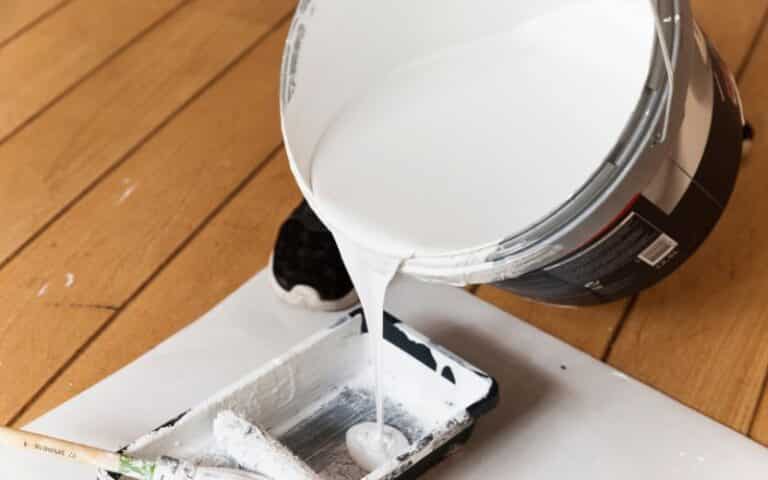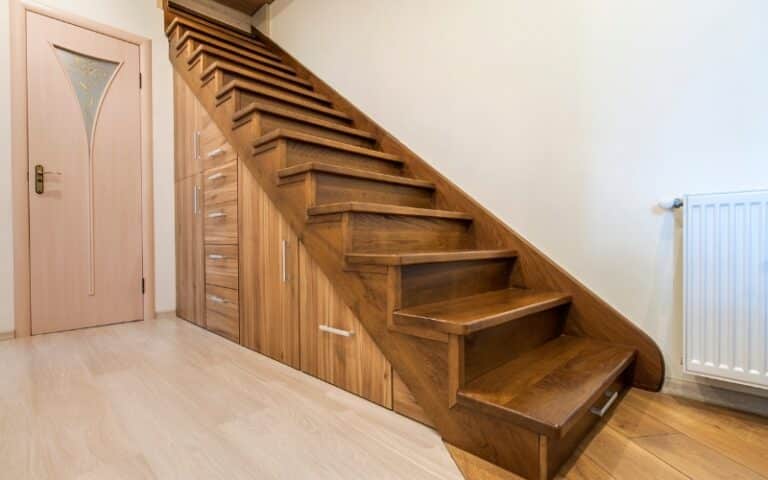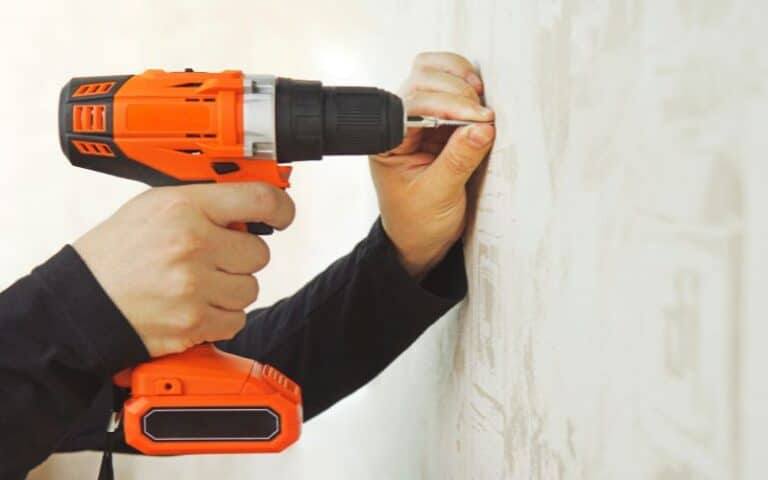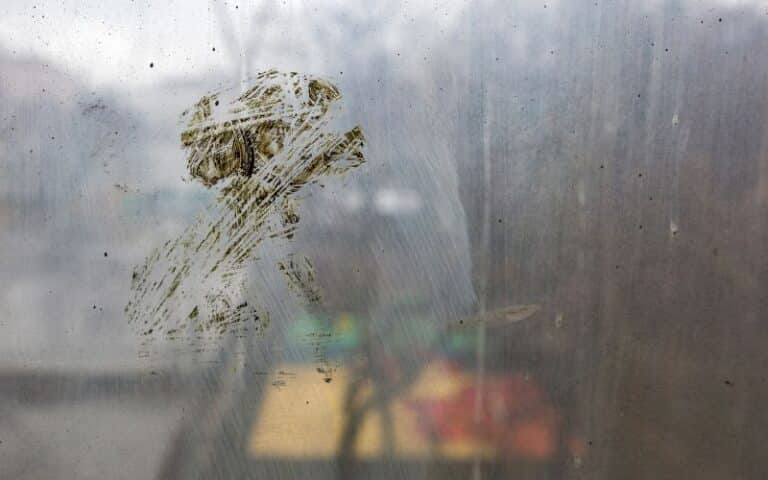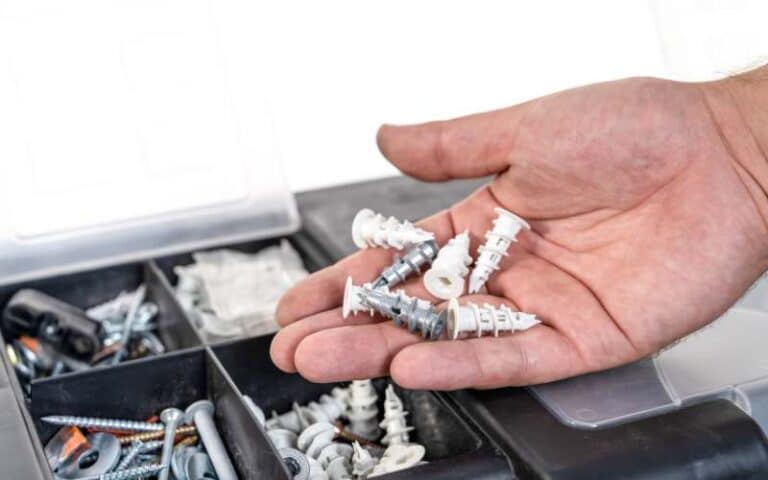Studs are vertical wall frames that make it easy for you to attach items to your wall.
After you finish applying drywall in your construction process, you’ll need to install trims to make it smooth.
A drywall with studs is usually required when installing trims to the wall. But let’s say you have drywall without studs; what do you do? How do you attach the trim to the drywall without studs?
You can attach the trim to the drywall using construction adhesive glue. This glue does not require studs to create a strong bond between the drywall and the trims. Once you attach the trim properly using the adhesive bond, it’ll last longer than the studs.
In this article, I’ll give detailed steps on using nails, glue, and screws to attach trims to drywall.
Ready for a Drywall Quiz?
Can You Attach Trim to Drywall With Nails?
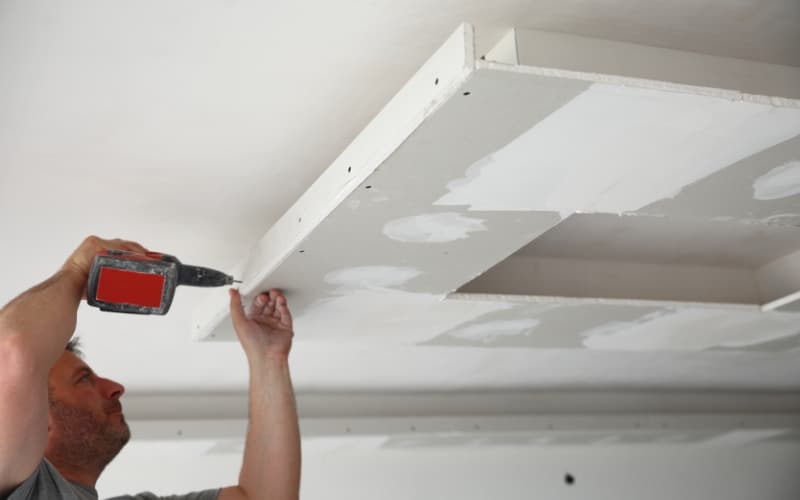
Yes, you can attach trims to your drywall with nails. However, you must be cautious of the type of nails you use to get the best result.
The finishing nails are the best type of nails to attach trims to drywall.
How to Attach Trim to Your Drywall With Nails?
Here is a table showing the materials you will need to attach the trim to your drywall with nails.
| Materials | Functions |
|---|---|
| Stud finder | To locate the wooden stud edges. |
| Pencil | To create a mark on the center of the studs. |
| Finishing Nail gun | To drive the nails into the trim. |
| Finishing nails | To attach the trim to the drywall. |
| Interior wood filler | To cover up the nail heads. |
| Primer | To create an adhesive layer for the paint. |
Here are steps to attach the trim to your drywall using nails
- Get your stud finder to look for all the wooden studs’ edges.
- Use a pencil to create a mark at the center of the studs.
- Use your nail gun to drive the finishing nails into the spots where you created marks.
- Preferably, you should use a finishing nail gun for this process.
- Drive the nails through the trim deep enough to make contact with the wall stud. Use a nail set to finish up the job.
- When you use nails to attach trims to your drywall, you’ll need to cover up the nail heads.
- You can use an interior wood filler to cover up the heads.
- Once you apply the filler, allow it to dry, and then sand the surface for a smooth finish.
- Coat the surface with a primer and then apply paint on it.
Can You Glue Trims to Drywall?
Yes, you can glue trims to your drywall. You can use adhesive glue if you don’t have drywall nails to attach trims to your drywall.
To get the best outcome, use all surface construction adhesive glue.
Here is a list of the advantages of using construction adhesive glue:
- Construction adhesive glue is sticky enough to attach trims to drywall.
- Construction adhesive glue can create a strong bond to hold hard surfaces together for a long time.
- You can use construction adhesive glue for a moisture-exposed environment as it is waterproof and resistant.
- The stronghold of construction adhesive glue does not deteriorate with temperature change. The bond remains strong no matter the change in weather conditions.
- You can use the construction adhesive glue for both porous and non-porous surfaces.
- The construction adhesive glue does not require difficulty during application and spreading.
- Construction adhesive glue takes little time to set. The glue dries very easily.
- The availability of construction glue is high.
How do Glue Trim to Drywall?
Here is a table showing the materials you will need to glue trims to your drywall and their functions.
| Materials | Functions |
|---|---|
| Measuring tape | Measure the dimensions of the drywall area where you are to attach the baseboard. |
| Pencil | To jot down the measurements. |
| Caulk gun | Hold the glue and apply it to the baseboard. |
| Brace nails | Add pressure on the baseboard and drywall for the glue to set faster. |
| Plier | Pull out the brace nails from the baseboard. |
Here are the steps to use adhesive glue to attach trims to drywall:
- The first step is to use a measuring tape to determine the dimensions of the drywall area where you are to attach the trim. Then, use a pencil to jot down the measurements
- Cut out the trim according to the dimensions you jotted down
- You’ll need a caulk gun to carry out this next step. Fill the tube of the caulk gun with adhesive glue.
- Use the caulk gun to put the adhesive glue at the back of the trim. Then, apply the adhesive glue directly at the center of the back of the trim.
- Pick up the trim, press it, and hold it against the drywall.
- Make sure to hold the trim for a while so that the trim sticks to the drywall. The trim will fall off the drywall if you loosen your hold too soon.
- You’ll have to leave the trim overnight for the glue to set. You’ll need to apply pressure on the trim to get the best outcome, so you should set up a brace.
- If you decide to set up a brace, you’ll need to make two brace nails available for the next step.
- Pick up the first brace nail and tap it into the trim. Allow the nail to reach the drywall, and at the same time, make sure the nail doesn’t sink too deep.
- Place the second brace nail at an angle below the first brace nail. Place the nail in the opposite direction of the first brace nail.
- Leave the glue to set overnight. Once the glue dries, use a plier to remove the nails from the trim. Pull the nails out gently so the baseboard will not suffer any damage.
Although construction adhesive glue has many desirable features and is suitable for many processes, it also has disadvantages.
Here are the disadvantages of using construction adhesive glue:
- First, once the glue dries, it is almost impossible to remove it.
- Construction adhesive glue can be quite expensive.
- The smell of construction adhesive glue is very strong and unpleasant
- It cannot be easy to even out construction adhesive glue on application. The trial and error end up making your work messy.
A good alternative for construction adhesive glue is wood glue. You can use wood glue to attach trims to your drywall.
Here are the advantages of using wood glue:
- The bond from wood glue is very strong.
- Wood glue will work effectively on hardwood and softwood.
- The application of wood glue is very easy.
- Wood glue is cheap to purchase.
Can You Attach Trim to Drywall Using Drywall Screws?
Yes, you can attach the trim to the drywall using drywall screws. If you do not have studs, glue, or nails, drywall screws are a good alternative to attach the trim to the drywall.
The best type of screws for this process are coarse thread drywall screws.
How to Attach Trim to Drywall Using Drywall Screws?
Here are the materials you will need to attach the trim to your drywall with drywall screws and their functions.
| Materials | Functions |
|---|---|
| Stud finder | To locate the studs on the wall. |
| Pencil | Mark out vertical lines on the studs. |
| Measuring tape | To measure the dimension of the drywall section where you are to attach the trim. |
| Utility knife | To cut out the appropriate size of trim, you need. |
| Drill | To make pilot holes in the drywall. |
| Interior wood filler | To cover up the screw holes. |
Here are steps to attach the trim to drywall using drywall screws:
- Get your stud finder to look for all the studs on your wall.
- Use a pencil to mark the vertical line on each stud.
- Use your measuring tape to measure out the section of the drywall where you are to attach the trim. Jot down the measurements with your pencil.
- Cut out the trim with a utility knife according to the measurements you jotted down.
- Pick up the trim and place it on your drywall.
- Use the pencil to mark vertical lines on the trim where the studs are.
- Along every 6 inches of the stud lines, drill a pilot hole.
- Use your power screwdriver to drive the coarse-thread screws into the pilot holes.
- Do not drive your screw where no studs are at the back of the drywall.
- You can use an interior wood filler to hide the screw holes.
Can You Attach Trim to Uneven Drywall Without Studs?
Yes, you can attach the trim to uneven drywall without studs. You should never avoid attaching the trim to uneven drywall, even with no studs.
The next best option for attaching the trim to uneven drywall without studs is to use a construction adhesive glue.
Construction adhesive glue is easy to apply and creates a stronghold between the trim and the drywall. You do not need studs to use construction adhesive glue for the attachment.

